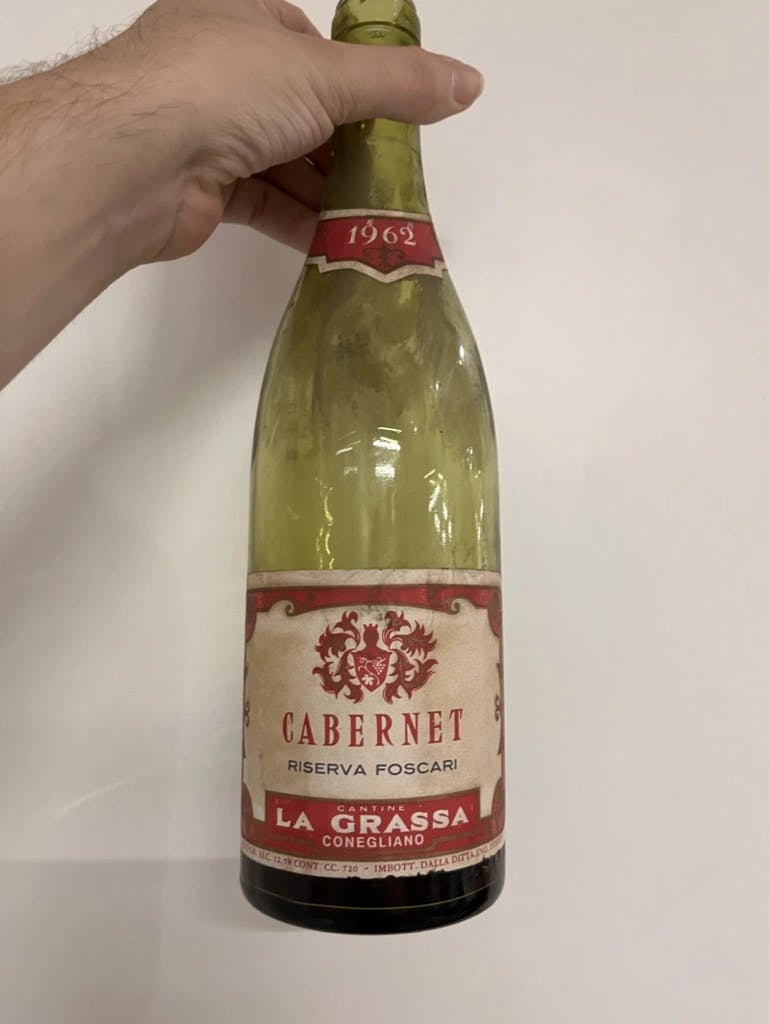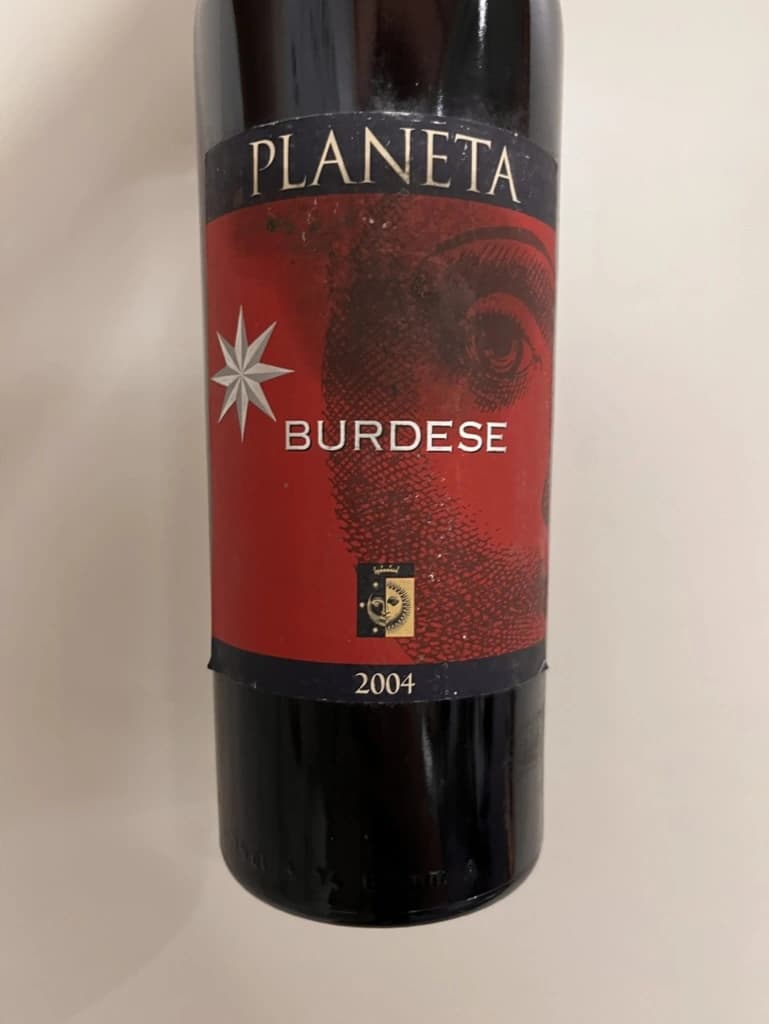Mixed Bag Vol. 9
We found a bag full of wine. It calls for a party.

A month and a half has passed since our last Barberry Garden event. And if you think I used this time to reflect on the past and plan the future, you are absolutely wrong. I played FFXIV1 and visited a bunch of wine-tasting events organised by Vova, Mykola, Roman and Elena (for example, Bourgogne Party, Sicily, Champagne Party and Notorious Friuli). Now that I decided to leave the cave I'd been sitting in, I asked chat GPT - 'what would be the best topic for our 21st event?'. After some delay (v3.5 is darn slow), it concluded that Mixed Bag is the best choice. 'Should I bring a bottle of Champagne?' - I continued. 'Of course, Champagne is always a great choice', Chat GPT persuaded me.
So hear me out. Between two evenings dedicated to Sicily focused on specific producers (Arianna Occhipinti and Gulfi), let's unpack the Pandora box (my backpack) and learn the joy of the unknown.
Bencze Virgo 2020
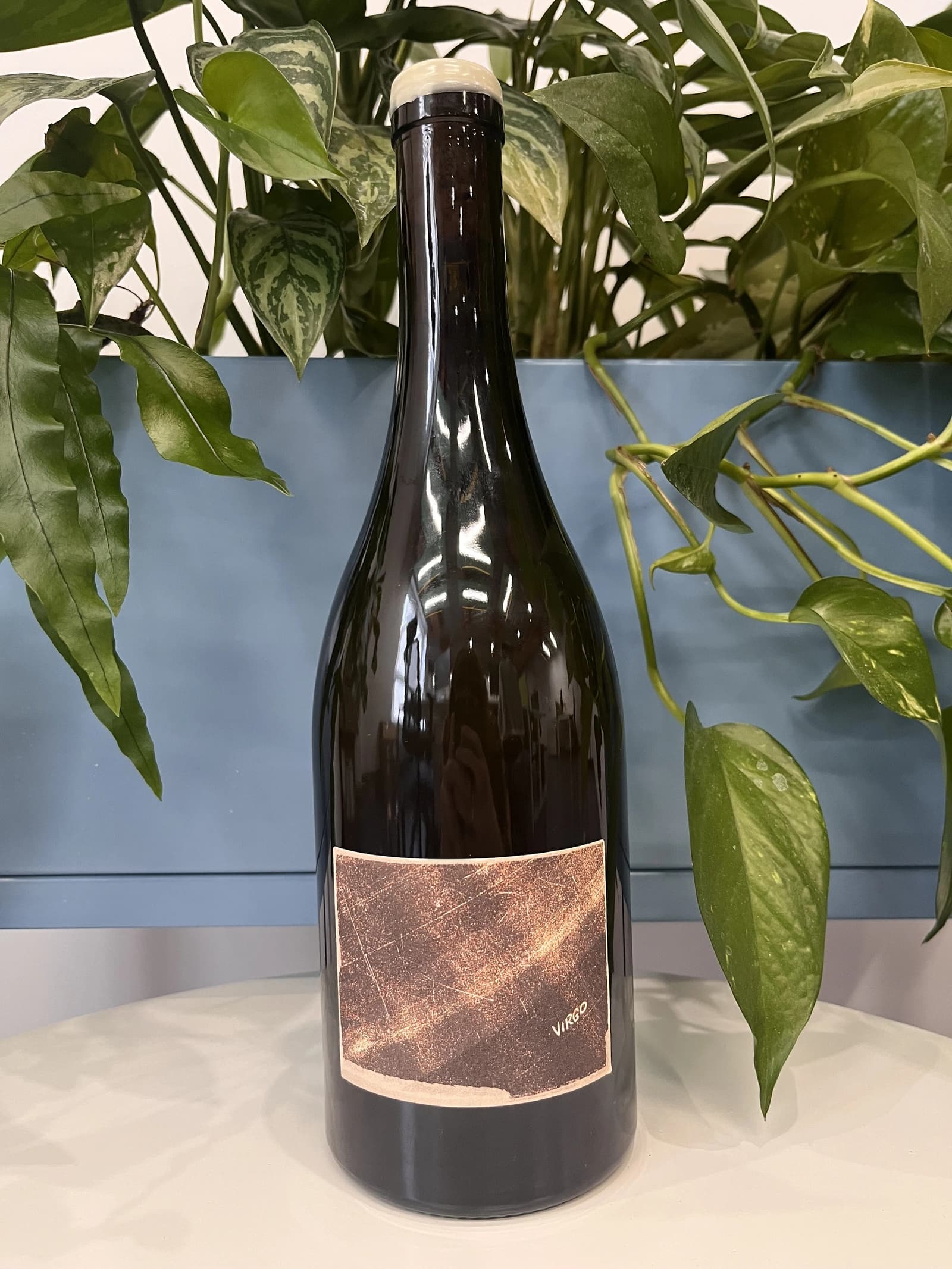
This wine secured the 🏅 7th place in our wine tasting lineup.
While not particularly fond of Bencze wines, I wanted the 'welcome' wine to be crisp and light. Its purpose is to wash away the weight of the long day and prepare us for a wine-tasting event.
Besides, its production is quite curious. First of all, it's a white wine made of Pinot Noir. Noir, Carl!
It's a reminder that most wine grapes have light-coloured juice (with a few notable exceptions). Red wines get their colour from the skins. And what happens when you remove skins? Blanc de noirs! White wine from dark grapes. It's a popular technique in Champagne but is used less often for still wines.
Secondly, it spent some time under the flor-like veil. For some reason, this yeast film fascinates me every time encounter it.
The grapes were gently pressed in whole bunches, and the must was poured directly into 228-litre French barrels. After fermentation, István Bencze filled the barrels somewhat 95%. The wine spent nine months on the lees without moving them, and a yeast film formed on the surface. István bottled the wine at the end of August of the following year without added sulphur, unclarified and unfiltered.
Fazenda Agricola Augalevada Mercenario branco 2021
- Region
- Spain » Vino de Mesa
- Type
- white still, dry
- Producer
- Vintage
- 2021
- Grapes
- Treixadura, Albariño, Torrontés, Palomino
- Alcohol
- 11
- Sugar
- 0.3
- Volume
- 750 mL
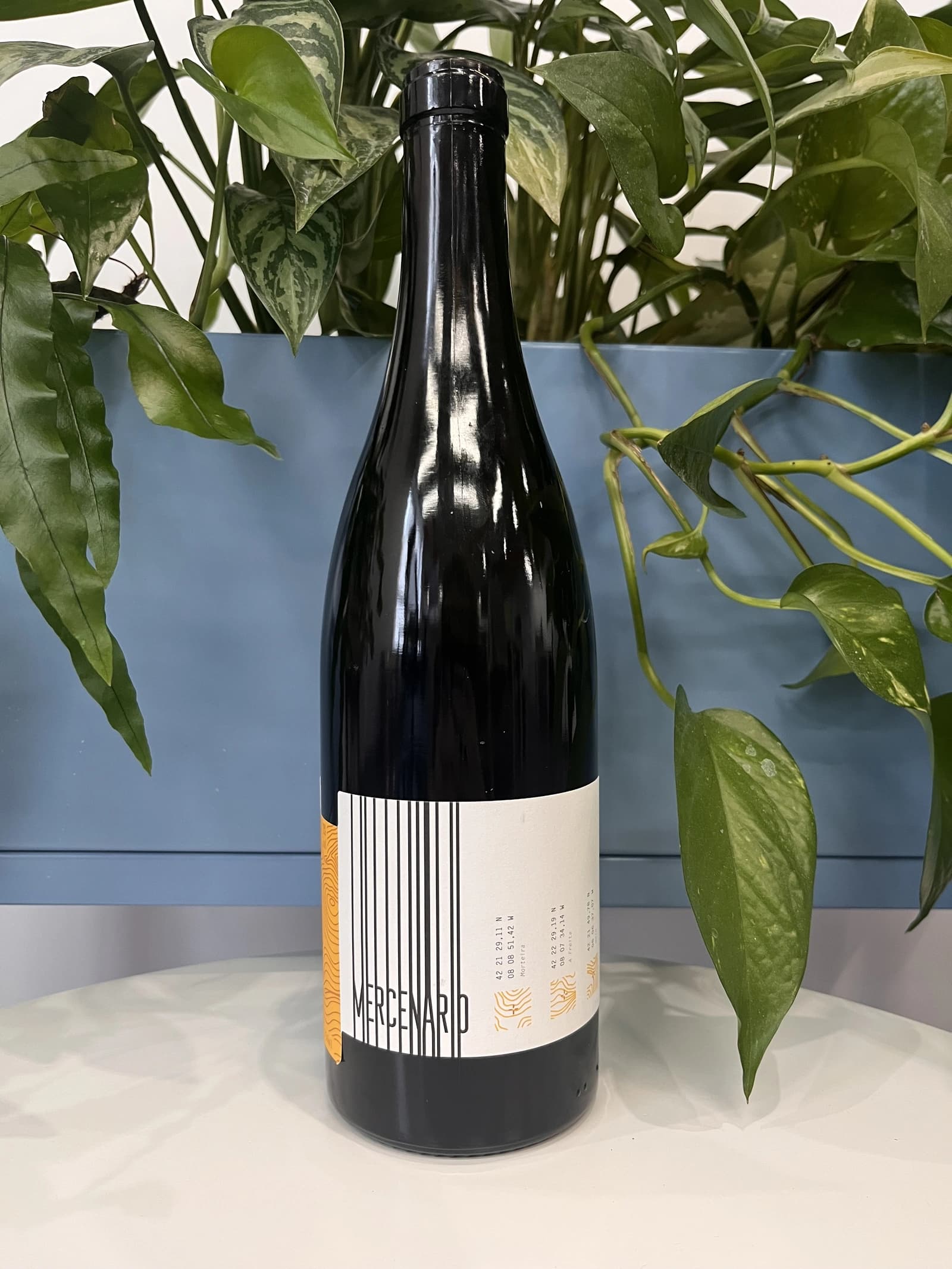
This wine secured the 🥉 3rd place in our wine tasting lineup.
There are few viticultural regions as dramatic, wild, and diverse as Ribeira Sacra. Being a boundary between the cool, rainy Atlantic coast and Spain's hot, dry interior, Ribeira Sacra enjoys the best and the worst of the two domains. The main threats to viticulture are the storms that blow in from the Atlantic, bringing plenty of rain and wind; and morning fogs. A paradise for fungus. And yet people grow vines and make wines here. Some locals even practice organic and biodynamic farming. And that's truly heroic.
Among them is Iago Garrido. Due to constant rain and humidity, mildew growth becomes almost uncontrollable in the region. As a result, vineyards require more frequent copper and sulfur treatments compared to other drier wine regions. The majority of the vineyards where Iago works are inaccessible by machines, therefore, most of the work is done by hand. This inaccessibility also motivates growers to use chemicals as manual labor is too expensive if the wines cannot be sold for a price to offset the extra cost. Despite these challenges, Iago sticks to organic farming with biodynamic practices.
In 2014, Iago released his first wine called Ollos de Roque (Eyes of Roque). He produced two versions of it; a commercial variant and an experimental one called Número Dous (Number Two in Galician), which he kept for private use. The former was aged in oak barrels, while the latter was vinified in buried amphorae and aged under the influence of flor. Initially, Iago thought that using amphorae was a mistake, so he decided to sell the oak version. However, his friends started to tell him how much they liked Número Dous, and Iago also found the same pleasure in this wine.
Número Dous provided Iago with a clear path, and what was a mere accident to avoid in the future became the central focus of the entire range. Nowadays, all his wines have varying levels of flor influence (even red wines).
The Mercenario range of wines is made from fruit that has been purchased or sourced from vineyards that are farmed by Iago, but not owned by him. Iago follows organic or biodynamic practices in the vineyards he works with, while some vineyards are a mix of organic and conventional depending on the grower. Only grapes from exceptional sites are accepted from conventional growers, and they make up a very small proportion of the overall fruit. Additionally, Iago is constantly encouraging the growers he works with to switch to organic farming methods.
Mercenario Blanco is crafted by blending four grape varieties: Treixadura, Albariño, Torrontés, and Palomino. The primary source of grapes for this wine is the Manolo de Traveso vineyard, known for its clay-rich soil and granite bedrock, situated among some of the highest vineyards in the Miño River Valley. Additionally, a portion of the Treixadura grapes is sourced from the decomposed granite vineyard in the Arnoia Valley, while the Albariño grapes hail from the lower Miño area in Filgueira. Smaller vineyard parcels can also be found scattered across the three valleys: Arnoia, Avia, and Miño.
The primary fermentation starts in stainless steel with low temperatures. After fermentation, they are transferred to an equal mixture of 400-litre amphoras and 600-litre stainless steel tanks for around ten months of ageing.
R. López de Heredia Viña Gravonia Blanco Crianza 2015
- Region
- Spain » Rioja DOC
- Type
- white still, dry
- Producer
- Vintage
- 2015
- Grapes
- Viura
- Alcohol
- 12.5
- Sugar
- 2.5
- Volume
- 750 mL
- Find at
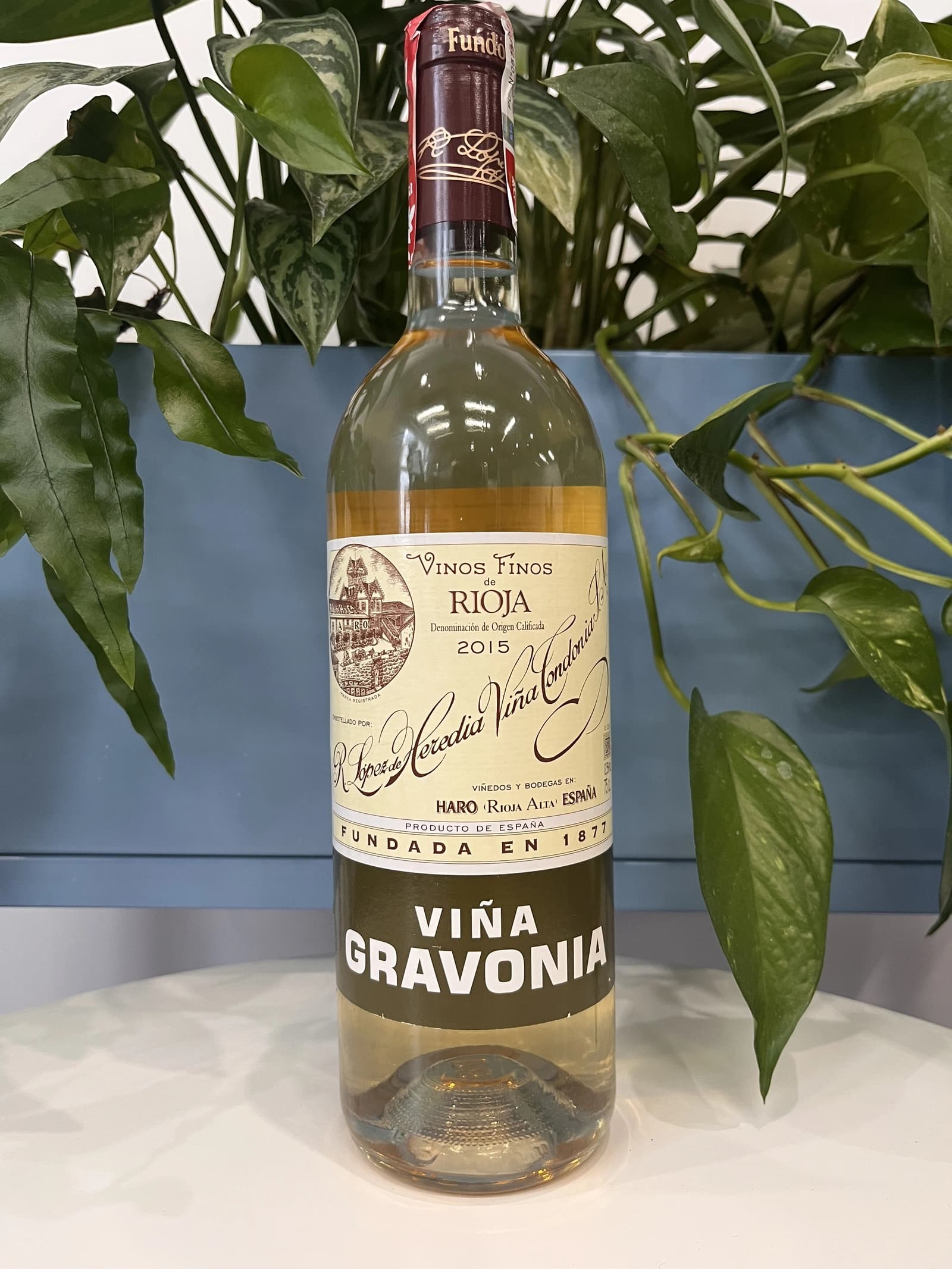
This wine secured the 🥇 1st place in our wine tasting lineup.
We are in Haro, the mythical capital of the Rioja Alta region. Its ascension to a prestigious winemaking region was ignited by phylloxera. A curious insect, brought by accident from North America to Europe, devasted vineyards across the continent. The Great French Wine Blight drove many winemakers to alternative regions. The French settled in Rioja because they found potential there.
Rioja, like many other regions, has seen its ups and downs, reflecting Spain's history. Though, having potential is not enough. The wine doesn't make itself. Don Rafael López de Heredia y Landeta was an enthusiastic student when French negociants visited Rioja in search of alternative grape sources. He followed their footsteps and fell in love with Haro as he saw potential in the combination of soil and climate. Around 1877 he began the design and construction of the complex, known today as the López de Heredia bodega, the oldest in Haro and one of the first three houses in the Rioja region.
López de Heredia is famous for being true to their heritage and house style. Unprecedented old-school wine, a time machine trapped in a bottle. Today, María José López de Heredia runs the bodega. She says "tradition" doesn't mean immobility or opposition to change. The world and nature follow their own rhythm. So they need to be flexible while maintaining eternal principles and criteria.
To talk in our bodega of white wines being exclusively young and uncomplicated, would be asking for trouble.
Viña Gravonia is 100% Viura from 24 ha plots at 340 meters above sea level in the Gravonia vineyard near the banks of the river Ebro. Historically these wines were called Viña Zaconia. The average age of vines is 45 years. The whole plot is planted only with Viura grapes.
To María José López de Heredia, Gravonia has to be very fresh with citrus freshness and some nuttiness but without the bitterness of the aged Tondonia, which they compare with the Carbonieux and such wines from Graves.
Viña Gravonia Crianza 2015 spent four years in barrels. In total, 27,000 bottles were produced. Prior to release, it spent almost four years in a bottle. Fore ready and friendly than, say, R. López de Heredia Viña Tondonia Blanco Reserva 2012.
Pierre Péters Brut Blanc de Blancs Cuvée de Réserve NV
- Region
- France » Champagne » Champagne AOC » Côte des Blancs
- Type
- white traditional sparkling, brut
- Producer
- Vintage
- NV, based on 2020
- Disgorged
- 2023-03
- On lees
- ~24 months
- Grapes
- Chardonnay
- Alcohol
- 12
- Sugar
- 6
- Volume
- 750 mL
- Find at
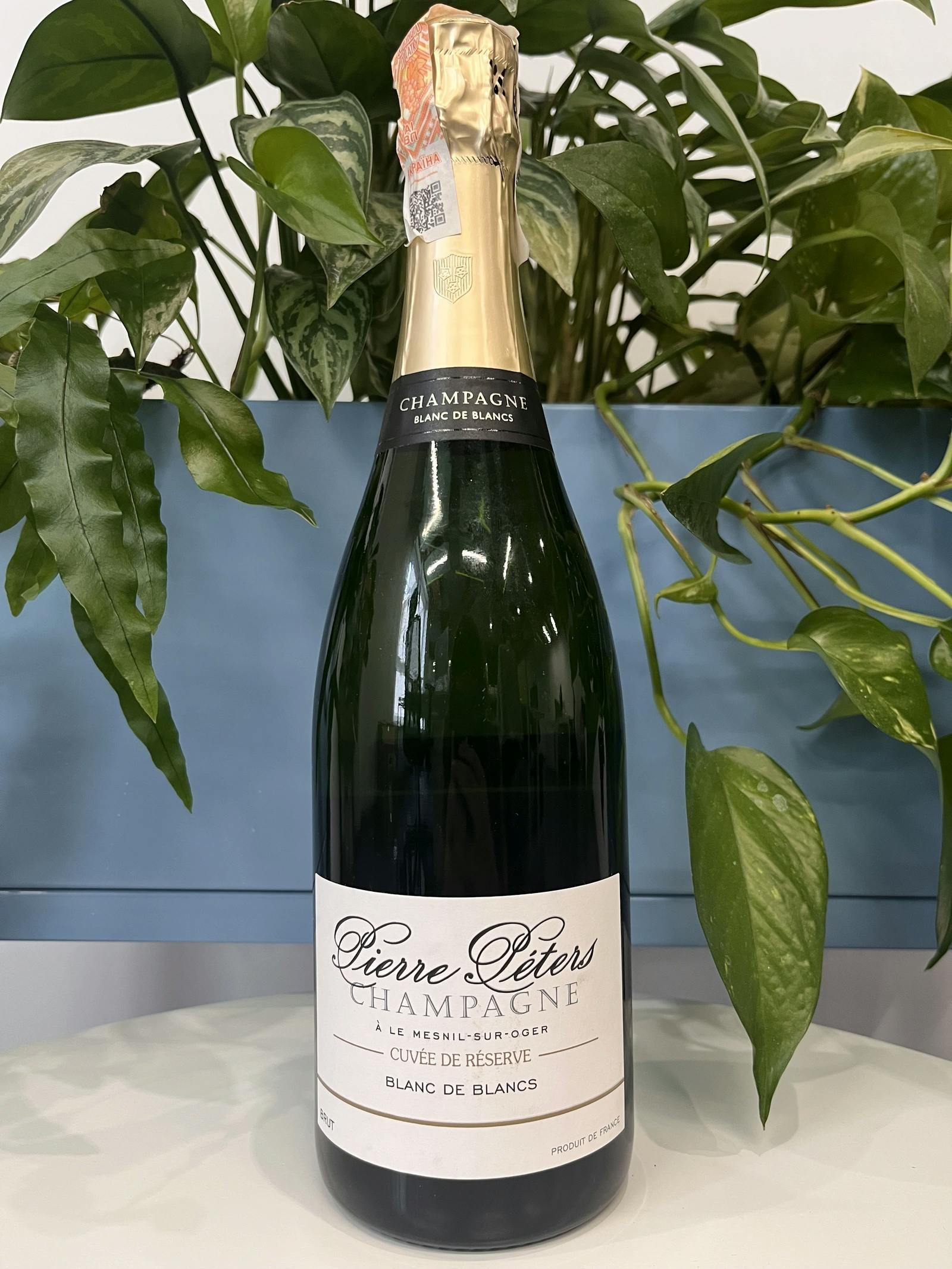
This wine secured the 🥈 2nd place in our wine tasting lineup.
It's time to reset and reflect. A bottle of Grand Cru Champagne from the heart of Côte des Blancs should do the job. Technically, Champagne is divided into five subregions, each with a different character and varietal speciality. Côte des Blancs almost exclusively produces white wines (although the name may refer to the often exposed bright-white chalk slopes). In total, there are four Grand Cru villages in this subregion.
Today, we have a bottle from a family involved in winemaking for just under two hundred years. They also own vineyards in all the important villages. Although Cuvée de Réserve is a 100% Chardonnay from the village of Le Mesnil sur Oger, one of the subregions Grand Crus.
Wines from Le Mesnil sur Oger are cold, mineral-driven, elegant and austere. Despite being the source of two of the most prestigious of all Champagnes (Salon and Krug's Clus du Mesnil), Mesnil was promoted to a Grand Cru only in 1985.
Unfortunately, the technical details provided by the producer are vague. It's unclear which vintage is used as a base, but the official site promises at least 45% of perpetual reserve wines (inspired by the solera method) with more than 25 different years (dating back to 1988). According to Skurnik, the wine undergoes partial MLF (75%); it ages in stainless steel, oak cask and concrete and then spends at least 24 months on lees.
Momento Mori Rosso 2020
- Region
- Australia » Gippsland
- Type
- red still, dry
- Producer
- Wine
- Vintage
- 2020
- Grapes
- Schioppettino, Syrah, Malvasia di Candia Aromatica
- Alcohol
- 12
- Sugar
- 0
- Volume
- 750 mL
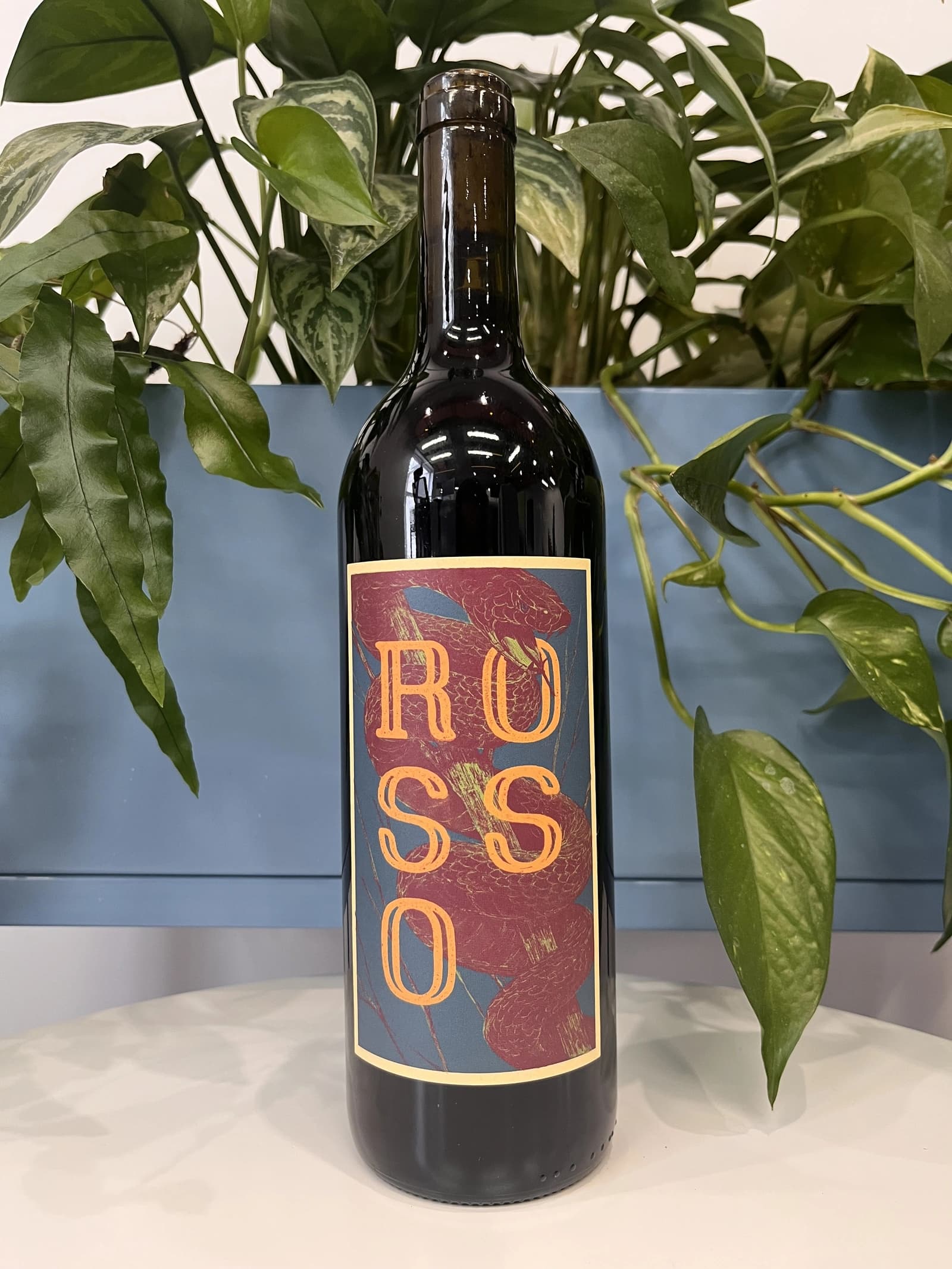
This wine secured the 🏅 5th place in our wine tasting lineup.
Momento Mori is a small-scale winery in Gippsland, Victoria (Australia). The team consists of New Zealander Dane Johns, his wife Hannah and a few friends. They farm vineyards using strict organic principles, but sometimes, they source grapes from like-minded growers throughout Victoria. All wines are made with minimal intervention - small ferments, no oak, no additives.
Farming and winemaking philosophy comes behind the result. At least, this is how I prioritise these things. When I only started to learn about non-conventional wines, I stumbled upon enough ill-made wines to make me cautious about winemakers placing philosophy over resulting wine. Low-intervention is not as easy as it sounds.
Momento Mori was among those winemakers that I didn't like at first. Luckily, I learned that their wines require some time to settle down. That's why I am happy that the team can now afford to age their wines in bottles before releasing them to market.
Aside from a punny name (with a notable change of a single litter) and catchy labels, the winery is famous for cultivating Meditterian grapes in Australia (the one with kangaroos). Greco di Tufo? Fiano? Schioppettino? Vermentio? Moscato Giallo? Let's be honest. Some of these grapes are infrequent even for Italian winemakers. And we are talking about Australia!
The last release of this cuvée was in 2017. Why wasn't it made in 2018 and 2019? Who knows. Now that it's back, you can find many happy drinkers around the internet. Rosso is a blend of Malvasia, Schioppettino and Syrah. Aside from Momento Mori, I only tasted Schioppettino by Bressan. How is it made? Who knows. In a low-intervention style, I reckon. Seriously, I could not find any meaningful information. People just keep repeating the same phrases.
Clos du Tue-Boeuf Cheverny Rouillon 2022
- Region
- France » Loire » Cheverny AOC
- Type
- red still, dry
- Producer
- Vintage
- 2022
- Grapes
- Gamay, Pinot Noir
- Alcohol
- 12.72
- Sugar
- 0.36
- Volume
- 750 mL

This wine secured the 🏅 4th place in our wine tasting lineup.
Over the internet, people repeat the same mantra all over again. Clos du Tue-Boeuf is a project from Loire Valley (France, I guess) run by Jean-Marie and Thierry Puzelat brothers. But Mykola Chobanu shares that it's not the case anymore because one of the brothers has retired. Your task is to figure out which one has stayed at the estate.
In any case, they (one of the brothers with his wife and kids) tend their 10-hectare family estate in Les Montils (part of the Cheverny AOC) and rent four hectares in a village nearby to produce Touraine AOC. One can quickly distinguish the origin of the wine by looking at the estate name. If it's at the top of the front label - it's estate-sourced wine.
Jean-Marie and Thierry are (or at least were) firm believers in the AOC system regulating winemaking. It's a controversial topic, so let's avoid making any judgement here and take the fact that our protagonists are believers. Cheverny AOC was formed in 1993, and some of the grapes were outlawed right away. Now the irony. Since the 60s, the Puzelats' father had been planting various vines, including later outlawed ones. Some would call him short-sighted. Some would say that not everyone can look into tomorrow's day. As a result, today, some of their wines must be marked as table wines. The good part, Clos du Tue-Boeuf are stars of the natural wine movement. And (hopefully) they don't have financial problems despite most of their wines being denominated.
Cheverny Rouillon is a 50/50 blend of Pinot Noir and Gamay. Named Rouillon or "rusty" for the reddish tint of its clay-limestone soils, this 1.9-hectare estate vineyard is made up of two parcels, one of Pinot Noir planted in 1991 and one of Gamay planted in 1996. The Puzelats farm it organically and harvest it by hand. As is typical of Tue Boeuf reds, the whole clusters go through a semi-carbonic maceration and spontaneous fermentation with native yeasts and without sulfur in vat. Rouillon is aged for 6 months in used demi-muids.
Domaine du Castel Petit Castel 2020
- Region
- Israel » Jerusalem
- Type
- red still, dry
- Producer
- Wine
- Vintage
- 2020
- Grapes
- Cabernet Sauvignon, Merlot, Petit Verdot
- Alcohol
- 14
- Sugar
- 3
- Volume
- 750 mL
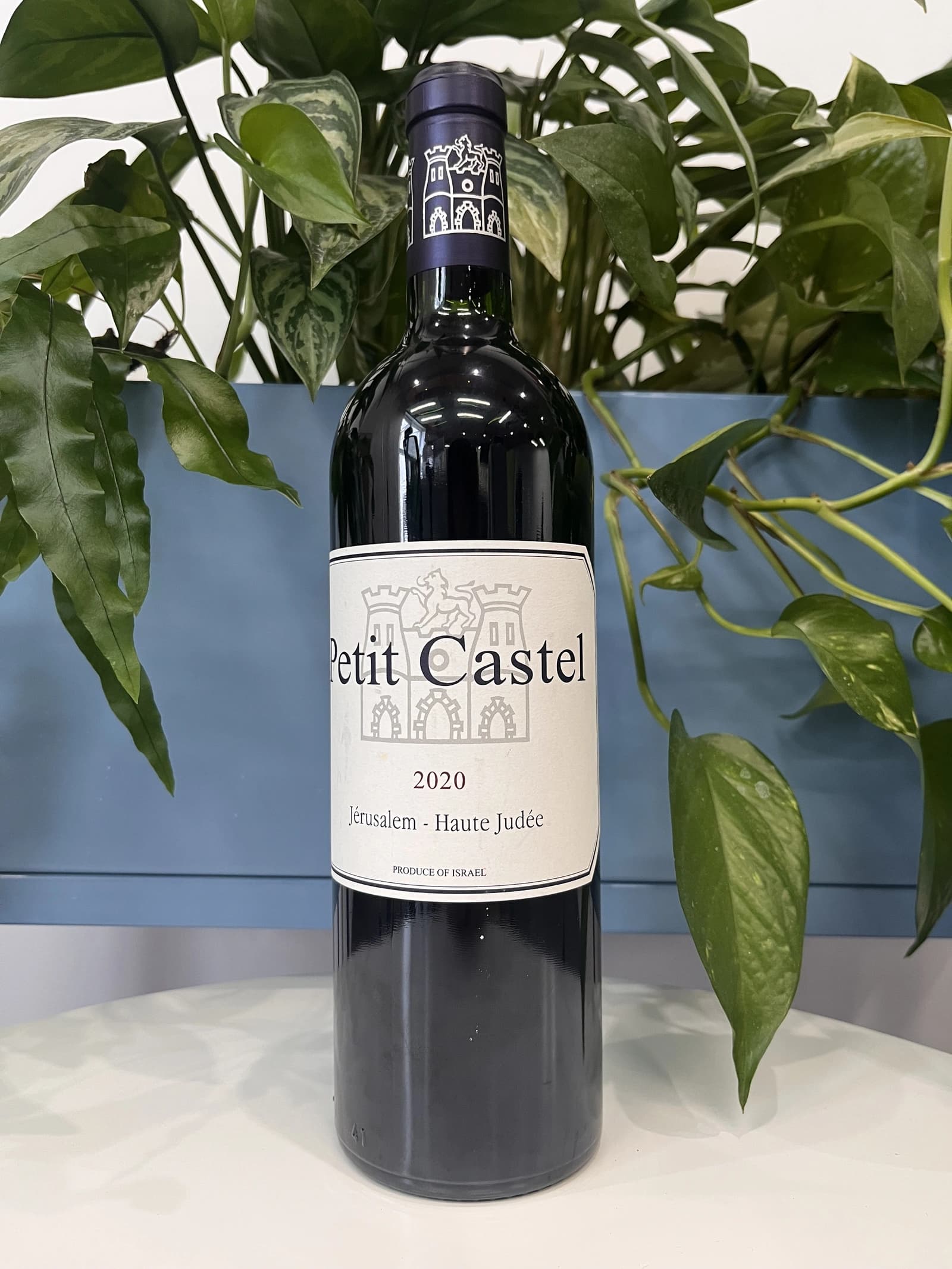
This wine secured the 🏅 6th place in our wine tasting lineup.
Frankly, I know little about Israeli winemaking. And it's a shame as the region has a long relationship with wine (religious rituals and trade). According to The Oxford Companion to Wine, there was a wine cellar in a 3,800-year-old Canaanite palace at Tel Kabri in Galilee. In my book, that's impressive. And we are only talking about proven artefacts hinting at the importance of wine in this region.
Only recently I learned that today people make wine even in the central parts of Israel. Of course, I knew about Golan Heights (a volcanic plateau in the north-east which rises to 1200 m in elevation) and Galille (the main vine-growing area, located on the border with Lebanon). But Judean Hills to the south of Jerusalem?
It turns out that historically, vineyards were concentrated in the warm, deep-soiled, low-elevation coastal regions. But only over the years, vinegrowers moved to cooler elevations of Galilee, Golan Heights and Judean Hills (where elevations range from 400 m to 900 m). Alright, I am not that good at Israeli geography, or geography in general.
I highly advise you to read the entry for Israel in the most recent 5th edition (it was released just a few weeks ago) of The Oxford Companion to Wine.
In 1988, Eli Ben Zaken planted the first modern-day vineyard in the Judean Hills. Just four years later, Eli, his family and friends harvested the grapes for what would become his first wine: Grand Vin. The estate's vineyards face the Mediterranean Sea at an altitude of 750 meters above sea level. The soils consist of terra rossa, clay and limestone.
Today, Castel owns over 40 hectares of vineyards planted to Cabernet Sauvignon, Merlot, Petit Verdot, Cabernet Franc, Malbec and Chardonnay.
The Petit Castel is a blend of Cabernet Sauvignon, Merlot and Petit Verdot. The wine matures for 12 months in French oak barrels followed by 4 further months of ageing in concrete tanks before bottling.
Resources
- Bencze Virgo 2020 - Lees Brothers
- Fazenda Augalevada - The Source Imports
- Lopez de Heredia
- Lopez de Heredia - Bowler Wine
- Spain: Make Rioja Great Again! by Luis Gutiérrez (The Wine Advocate | July 2022 Week 2)
- Champagne Pierre Petérs - Skurnik
- Champagne Petérs
- Parr, R., & Mackay, J. (2018). The Sommelier's Atlas of Taste: A Field Guide to the Great Wines of Europe. Ten Speed Press.
- Momento Mori Wines
- Momento Mori Give up the Ghost 2019 - gonaturalista
- Harding, J. (2023). The Oxford companion to wine. Oxford Companions.
- Domaine du Castel Petit Castel 2020
Raw scores
Footnotes
-
The 6.5 patch is out on the 3rd of October. Imagine how dedicated I am to our wine events that I postponed my playtime. ↩

